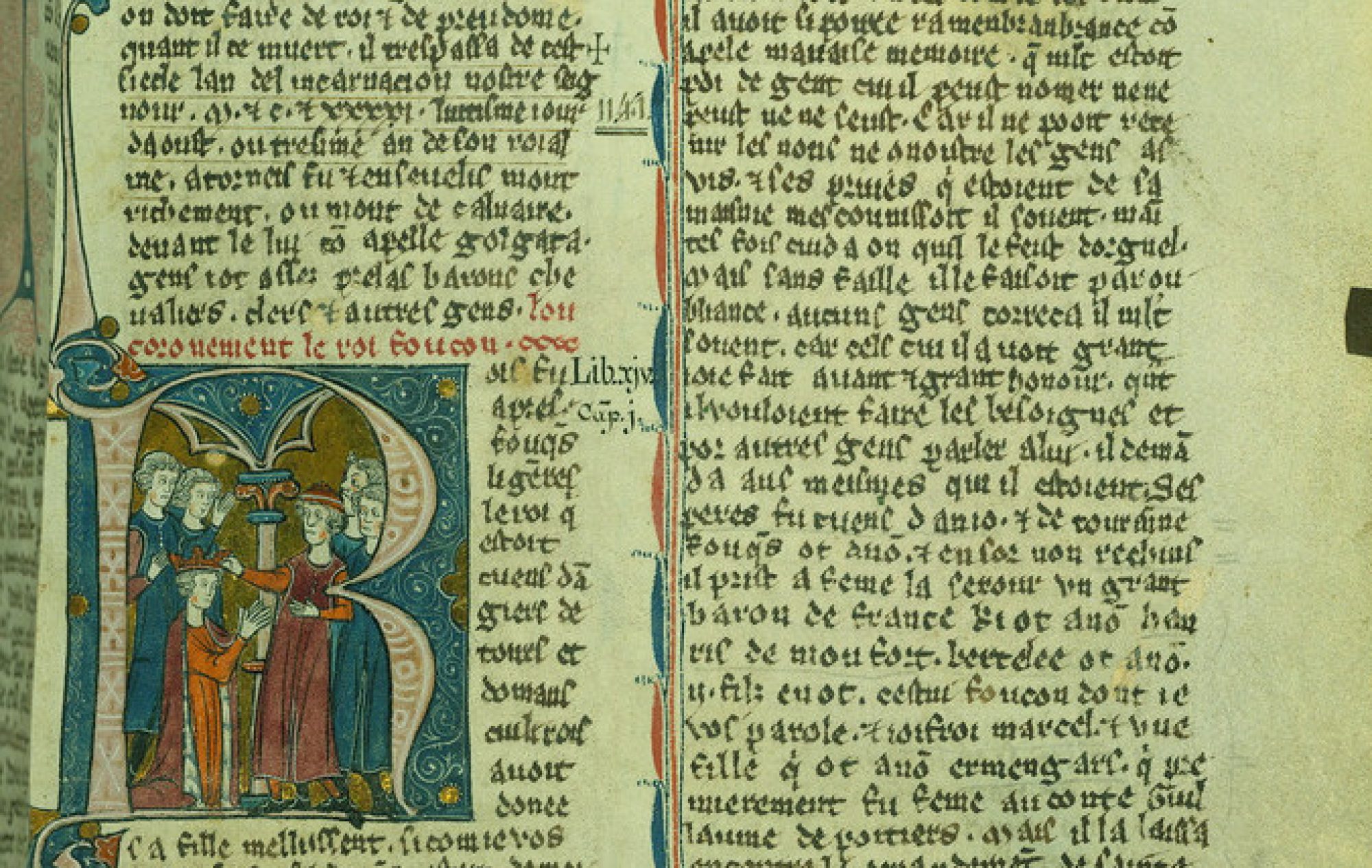Within the third mystery, the theme of witchcraft is discussed in relation to Joan. For instance, the excerpt states that she could “cut a napkin in pieces, and suddenly to have restored it whole.”1 Such references indicate that witchcraft is a significant topic in better understanding the context of the time and society’s perception of witchcraft during the Middle Ages. However, it is important to note that people, in general, were not being burned for witchcraft during the time of Joan of Arc, nor did the Witchcraze occur during Joan of Arc’s lifetime.
When discussing the topic of witchcraft during the Middle Ages, it is crucial that one investigate its development and the different aspects that it was composed of during the time. One principle was that the realm of witchcraft consisted of two distinctive types of magic: high and low. High magic was ceremonial or ritual magic, which included the studies of alchemy and astrology.2 High magic was consequently “similar to religious, scientific and philosophical speculation” and therefore strived to “understand, grasp and control the universe.”3 Those who practiced high magic sought union with the divine; therefore, communion with the gods could only be accomplished through magic.4
On the contrary, low magic was thought to be “practical and aimed at obtaining immediate effects.”5 It consisted of spells and charms in order to achieve simple and practical effects in everyday life.6 Performance of low magic included urinating in a ditch to make it rain or sticking pins into a wax doll—which represented a specific individual—to cause them pain.7 Consequently, with the existence of both high and low magic, witchcraft was a very broad topic, and depending on the context, could have positive or negative connotations.

During the Middle Ages, witchcraft was not a superstition as it is today. Instead, it was a system of belief based on philosophical and empirical observations.8 As witchcraft developed, it became “closely bound to heresy.”9 Heresy deviated from what the church imposed upon society, therefore witchcraft and sorcery did not conform to the Christian faith and was not accepted by people of Christian faith. Moreover, as witchcraft became more closely examined, Aristotelian scholars of the Middle Ages concluded that performing magic was only possible with the help of demons.10

As a result, witches were accused of “worshipping demons, renouncing their faith and surrendering themselves completely to the service of the devil.”11 This significantly influenced and shaped the perception of witchcraft during the Middle Ages. Its relation with the devil greatly threatened the Church and the entire Christian world. This threat resulted in the execution of approximately 100,000 to 200,000 people for the crime of witchcraft, while millions were “tortured, harried (harassed) or terrified.”12 Evidently, society was highly repressive to witchcraft and sought to eliminate any threat to the order of the Christian world.
Overall, the background knowledge of witchcraft during the Middle Ages allows one to better understand society’s perception of witchcraft at the time and why the Joan in the excerpt received significant backlash and repress from society. Additionally, it allows one to view the progression of witchcraft through time and how it transitioned from a common system of belief to a complete threat to the Christian world.
- Johannes Nider, Formicatus, Douai, 1602.
- Joseph R. Strayer, Dictionary of the Middle Ages. Vol.12. Thaddeus Legend- Zwart Noc (New York: Charles Scribner’s Sons, 1988), 658.
- Jeffrey Burton Russell, Witchcraft in the Middle Ages (New York: Cornell University Press, 1972), 7.
- Ibid, 8.
- Ibid, 7.
- Strayer, Dictionary of the Middle Ages, 658.
- Russell, Witchcraft in the Middle Ages, 7.
- Strayer, Dictionary of the Middle Ages, 659.
- Russell, Witchcraft in the Middle Ages, 3.
- Lois Martin, The History of Witchcraft: Paganism, Spells, Wicca and more (United Kingdom: Pocket Essentials, 2015), 2.
- Michael D. Bailey, Battling Demons: Witchcraft, Heresy and Reform in the Late Middle Ages (Pennsylvania: The Pennsylvania State University Press, 2003), 4.
- Russell, Witchcraft in the Middle Ages, 11.
- Hieronymus Bosch, Witches, circa 1475-1525, pen and brown ink on paper, 8 in x 10.4 in, Louvre Museum, Paris, Hieronymus_Bosch_-_Witches_-_WGA02635.jpg.
- Torturing and execution of witches in medieval minature, 14th century, image in a book, 500 × 362 pixels, British Library, United Kingdom, Torturing_and_execution_of_witches_in_medieval_miniature.jpg.
